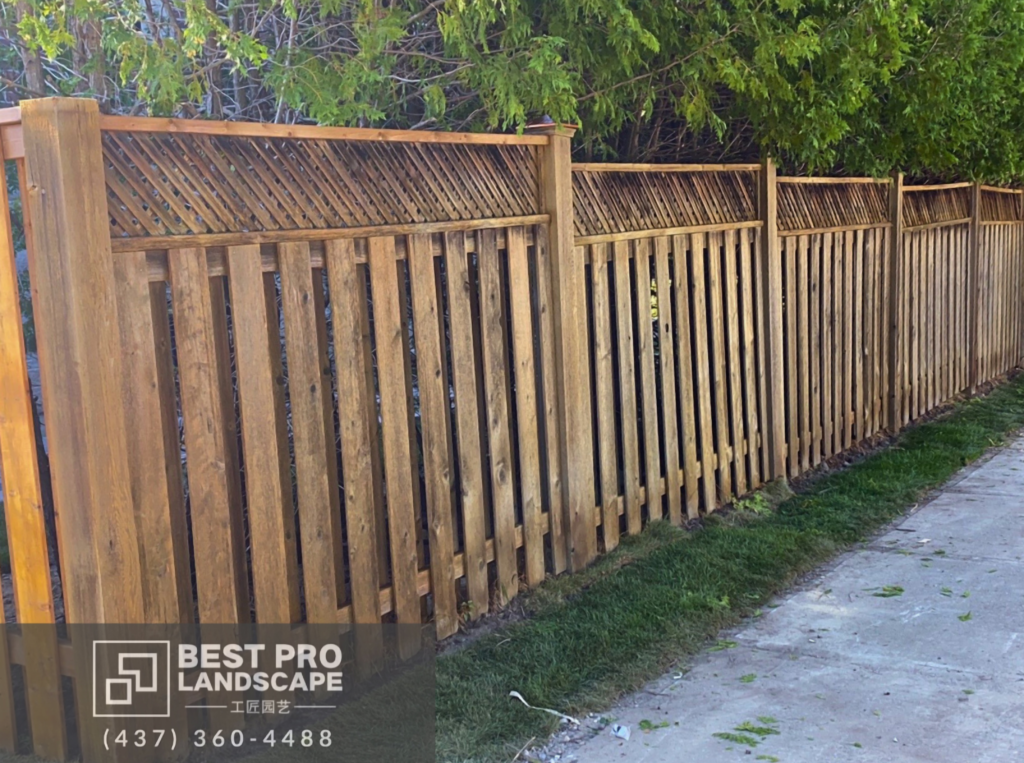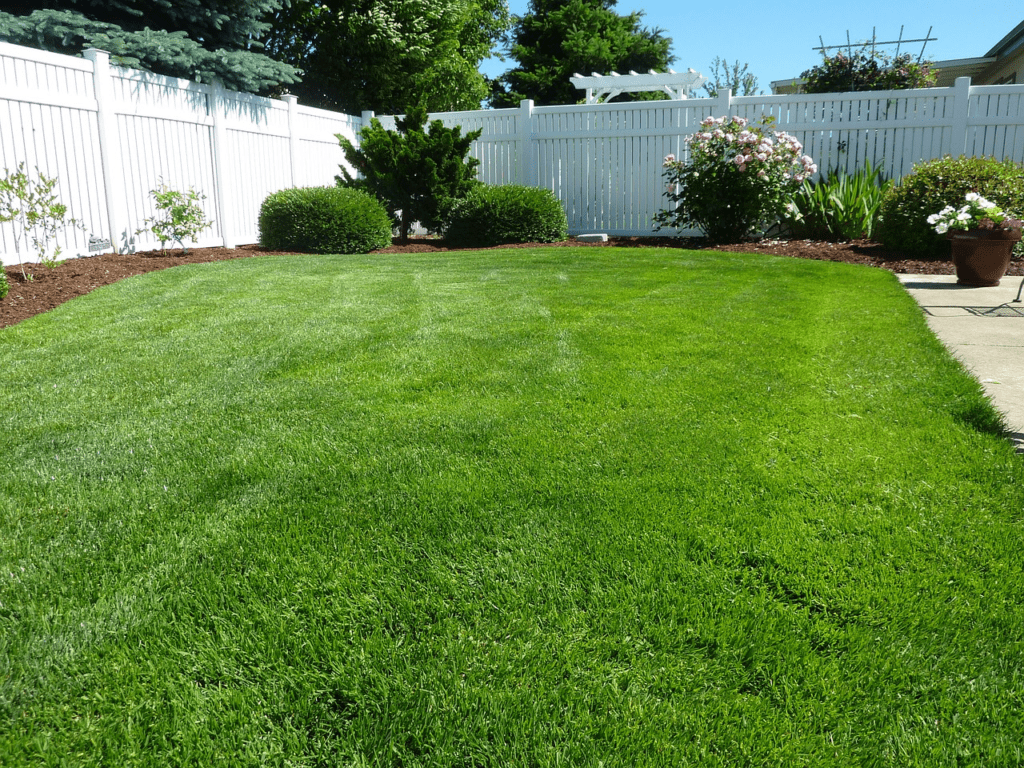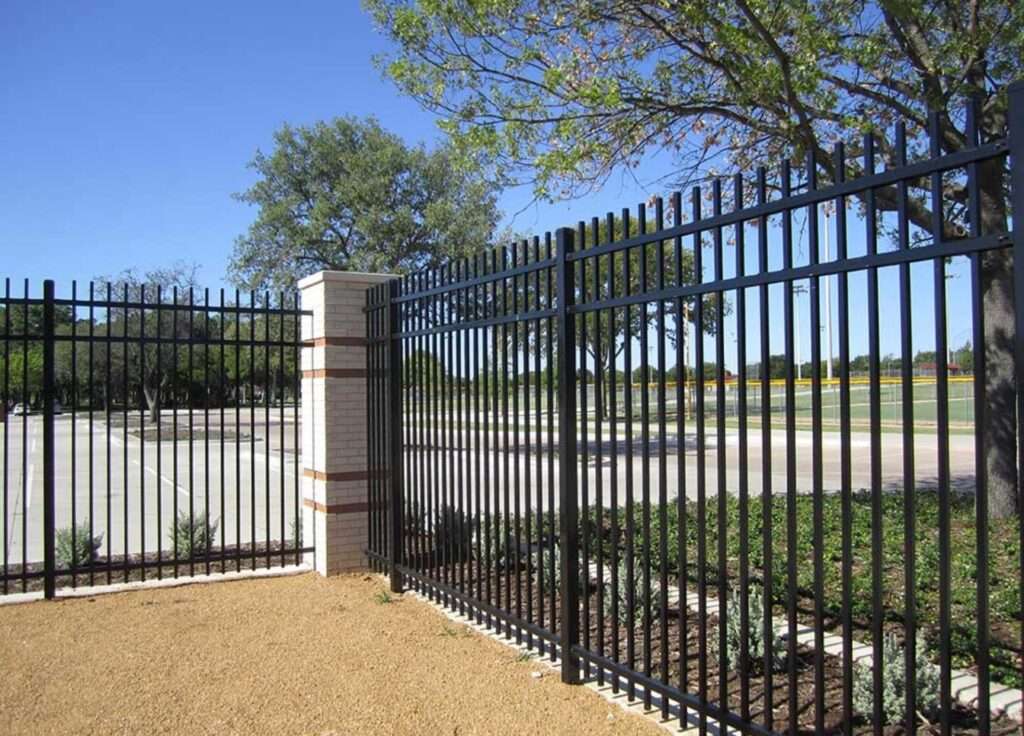What is the Best Fencing Option: Vinyl vs. Wood vs. Aluminum?

Choosing the right fencing material for your property can significantly impact its appearance, durability, and maintenance requirements. Three popular options for fencing are vinyl, wood, and aluminum. Each material has its advantages and considerations, making it essential to understand their characteristics before making a decision. In this article, we will compare vinyl, wood, and aluminum fencing to help you determine the best option for your needs.
Wood Fencing
Wood fencing is a classic and natural option that offers warmth, beauty, and versatility. Here are the key aspects to consider about wood fencing:
Aesthetic Appeal: Wood fences have a timeless charm and blend well with various architectural styles. They can be stained or painted to achieve the desired color and finish.
Natural Beauty: The natural grain and texture of wood add character and visual interest to your property. It creates a warm and inviting atmosphere, especially in outdoor spaces.
Versatility: Wood fencing is available in different types of wood, such as cedar, pine, and redwood, each offering unique characteristics in terms of durability and appearance.
Maintenance Requirements: Wood fences require regular maintenance, including staining or painting every few years, sealing to protect against moisture, and inspections for rot or insect damage.
Vinyl Fencing
Vinyl fencing has gained popularity due to its durability, low maintenance requirements, and versatility in design. Here are some key points to consider about vinyl fencing:
Durability: Vinyl fencing is known for its strength and resistance to rot, decay, and insect damage. It can withstand harsh weather conditions without deteriorating, making it a long-lasting option.
Low Maintenance: Unlike wood, vinyl fencing does not require staining, painting, or sealing. It can be easily cleaned with soap and water, maintaining its appearance with minimal effort.
Variety of Styles: Vinyl fences are available in various styles, including privacy fences, picket fences, and decorative designs. They can be customized to suit your aesthetic preferences and complement your property’s architecture.
Cost Consideration: While vinyl fencing tends to have a higher upfront cost compared to wood, its long-term durability and minimal maintenance requirements can result in cost savings over time.


Aluminum Fencing
Aluminum fencing combines strength, durability, and minimal maintenance, making it a popular choice for both residential and commercial properties. Here are the key features of aluminum fencing:
Durability: Aluminum fencing is resistant to rust, corrosion, and weather damage, making it suitable for outdoor environments. It does not warp, crack, or rot like wood.
Low Maintenance: Similar to vinyl fencing, aluminum fencing requires minimal maintenance. It can be cleaned with soap and water to remove dirt and debris.
Versatile Designs: Aluminum fences come in various styles, including ornamental designs, decorative patterns, and privacy options. They can be customized to match your property’s aesthetic.
Longevity: Aluminum fencing is known for its longevity, as it does not deteriorate over time like some other materials. It can withstand years of exposure to sunlight, rain, and snow.
Installation Consideration: Aluminum fencing is generally lightweight and easy to install. Professional installation ensures proper alignment, stability, and security.
Comparative Analysis
Now that we’ve explored the key features of vinyl, wood, and aluminum fencing, let’s compare them based on several factors:
Durability: Vinyl and aluminum fencing are more durable and resistant to environmental factors compared to wood, which may require regular maintenance and repairs.
Maintenance: Vinyl and aluminum fencing require minimal maintenance, while wood fencing requires regular upkeep such as staining, sealing, and repairs.
Aesthetic Appeal: Wood fencing offers a natural and timeless aesthetic, while vinyl and aluminum fencing provide versatility in design options
Cost Consideration: Vinyl fencing typically has a higher upfront cost but lower long-term maintenance expenses. Wood fencing may be more affordable initially but requires ongoing maintenance costs.
Environmental Impact: Wood is a natural and renewable resource but requires maintenance and may raise sustainability concerns. Vinyl and aluminum have varying environmental considerations related to production and disposal.
Choosing the best fencing option depends on your priorities, budget, aesthetic preferences, and maintenance preferences. Vinyl fencing is ideal for those seeking durability and low maintenance, while wood fencing offers a classic look with regular upkeep requirements. Aluminum fencing combines strength, versatility, and minimal maintenance, making it suitable for various property types.
Ultimately, consider consulting with fencing professionals to assess your specific needs,
evaluate the pros and cons of each material, and make an informed decision that enhances the beauty, security, and functionality of your property.
Read related Article: Fence Replacement Signs
